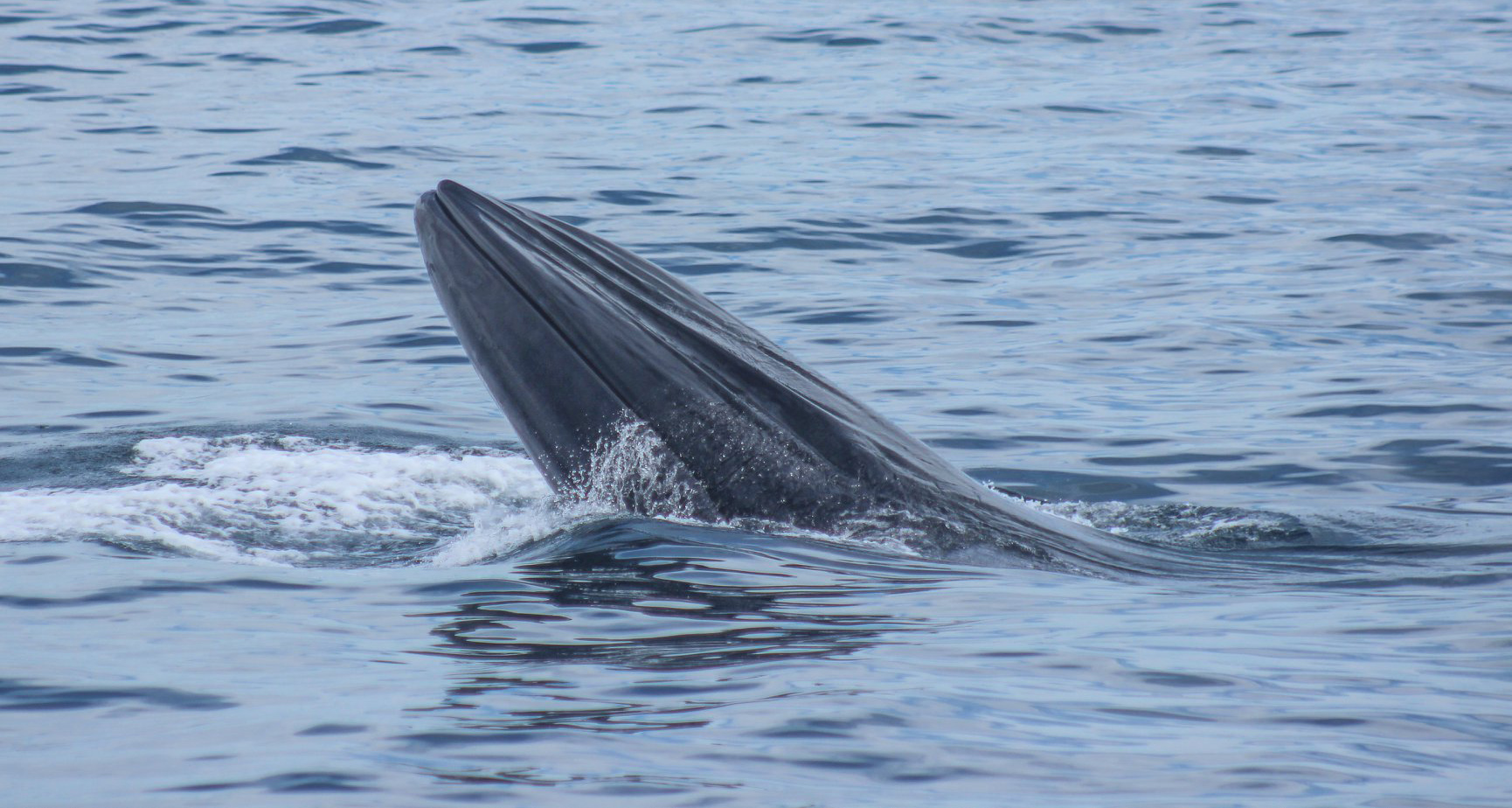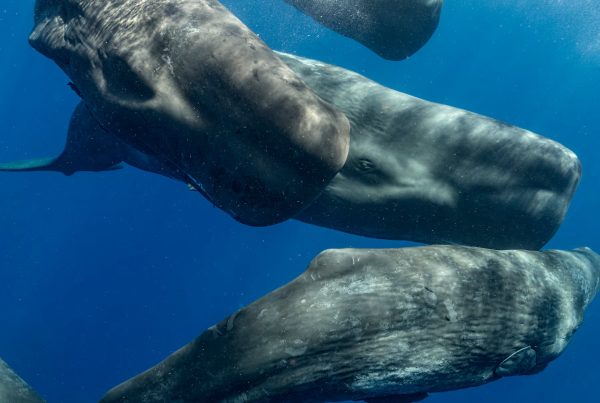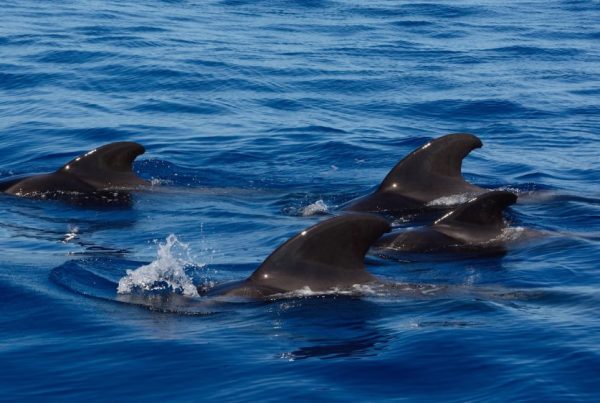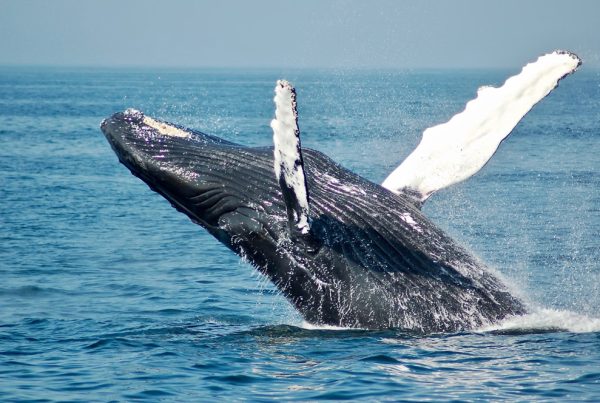
Being non-migratory, Bryde’s whales are able to take advantage of our temperate, less prey-abundant waters through switching between different prey sources depending on what is available to them at the time!
Researchers at The University of Auckland have recently published a paper looking at the feeding tactics of Bryde’s whales, the only species of whale that can be observed year-round in Auckland’s Hauraki Gulf Marine Park/Tikapa Moana/Te Moananui-ā-Toi.
Observation of feeding events found that their behaviour was different depending on what they were feeding on. When feeding on zooplankton, the whales swam in tight circles and performed head-slapping behaviours on the water surface to bring the zooplankton together. Shortly after, the whales lunged on their side to scoop up their meal. However, when feeding on fish, the feeding tactic was different with no head slapping and lunges were more vertical through the water. Both types of feeding behaviour finished with whales rolling onto their sides, likely to minimise prey escaping from their mouths.
This knowledge adds to previous research that found that these whales only tend to feed during the day and spend the night resting. Therefore, as their energy demands are not as high as migrating whales and by having specialised feeding tactics specific to different prey, Bryde’s whales are able to sustain themselves year-round in the Hauraki Gulf.


